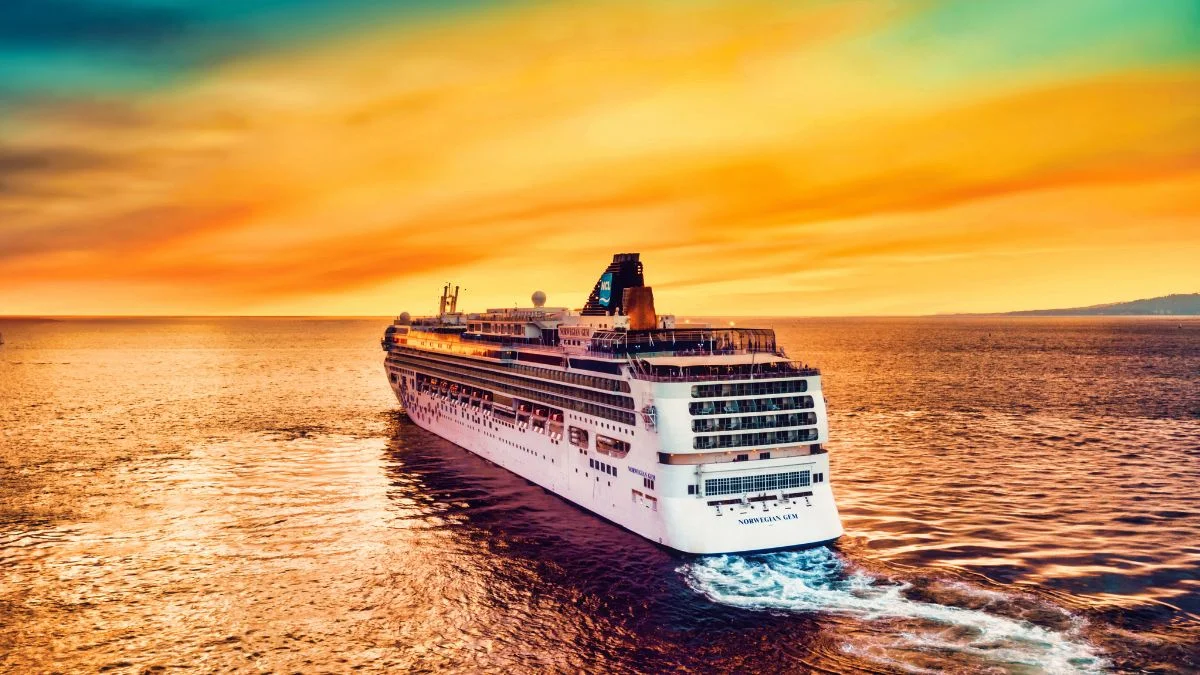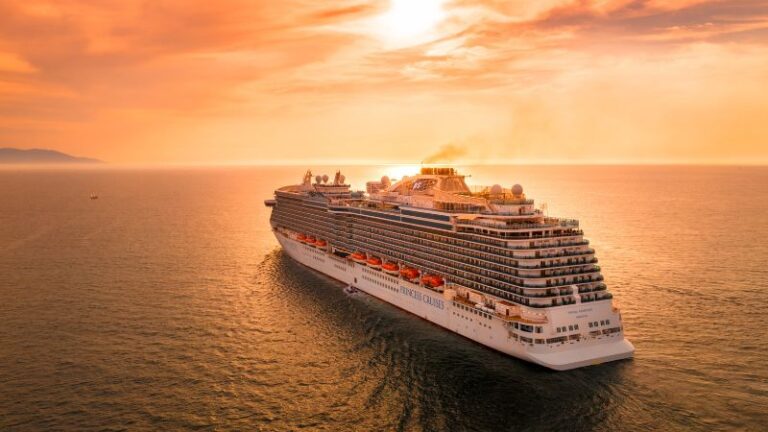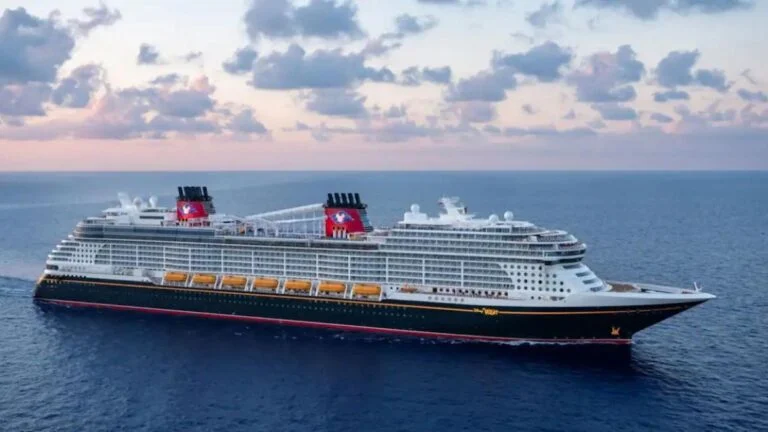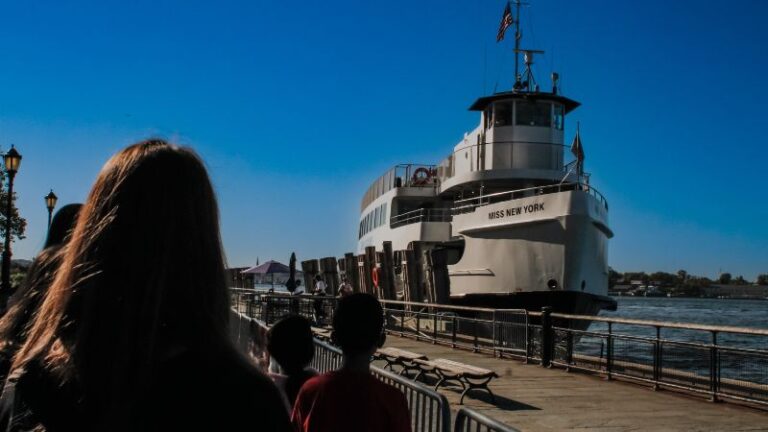First-Time Cruisers: Essential Tips for Smooth Sailing

As participants in Amazon Associates and other programs, we earn from qualifying purchases. This comes at no additional cost to you. For more details, see our Affiliate Disclosure.
Are you ready to embark on your first cruise adventure? Cruising can be a fantastic way to explore new destinations and enjoy a relaxing vacation. However, for first-time cruisers, it can be overwhelming to navigate the ins and outs of a cruise ship. Don’t worry, we’ve got you covered!
In this article, we’ll share essential tips to help you have a smooth sailing experience. So sit back, relax and get ready to set sail!
Picking the Perfect Cruise: A Guide to Different Cruise Lines and Destinations
Picking the perfect cruise is perhaps one of the most crucial steps in planning your maiden voyage. The diversity in cruise lines and destinations offers a world of choices, each with its unique attractions, itineraries, and styles. To ensure a remarkable experience, it’s essential to choose a cruise that aligns with your interests, lifestyle, and travel aspirations.
Firstly, consider the different cruise lines available. Each line has its personality and specialties. Some, like Disney Cruise Line, are family-oriented, offering a plethora of activities and entertainment for all ages. Others, like Silversea or Viking, are known for their luxury cruises, providing exquisite dining experiences, high-end amenities, and personal services. If you are looking for more adventure and outdoor activities, lines such as Royal Caribbean or Norwegian Cruise Line might be the perfect fit.
Destination is another critical factor to take into account. Are you intrigued by the icy landscapes of Alaska, or do you prefer the tropical allure of the Caribbean? Would you like to sail the historic routes of the Mediterranean, or does the exotic wildlife of the Galapagos Islands pique your interest? Take some time to research the destinations each cruise line offers and the specific itineraries of their cruises. Also, consider the time of the year you plan to sail as weather conditions greatly affect the overall experience.
Don’t forget to consider the size and type of the ship as well. Larger ships often come with a wide array of amenities and activities, from Broadway-style shows to surfing simulators, while smaller ships can offer a more intimate, relaxed atmosphere and access to less crowded, smaller ports.
Selecting the perfect cruise involves careful consideration of all these elements. It may seem overwhelming at first, but the beauty of cruising is that there is a perfect ship and itinerary for everyone. Take your time, do your research, and you will find a cruise that will provide an unforgettable maiden voyage.
Understanding the Cruise Lingo: Terminology for the First-Time Cruiser
Sailing on a cruise ship is much like entering a whole new world, one with its unique lingo that might initially seem puzzling to first-time cruisers. Understanding the common terms used on board not only enhances your overall cruising experience but also allows you to navigate the ship and its services more efficiently. Let’s decipher some of the essential cruise terminologies to help you sail smoothly:
- Bow: The forward or front part of the ship.
- Stern: The rear end of the ship.
- Port: When facing forward, the left side of the ship. Also, the term refers to the stops or destinations on your cruise itinerary.
- Starboard: When facing forward, the right side of the ship.
- Muster Station: The location where passengers assemble in case of an emergency drill or real-life situation.
- Gangway: The platform or ramp used to enter or exit the ship when it’s docked.
- Berth: Refers to the bed in a cabin. It can also mean the ship’s allocated position at a dock.
- Aft: Refers to the direction towards the stern (back) of the ship.
- Forward: The direction towards the bow (front) of the ship.
- Embarkation: The process of boarding the ship at the start of your cruise.
- Disembarkation: The process of leaving the ship at the end of your cruise.
- Stateroom/Cabin: Your private room on the ship.
- Purser: The ship’s officer in charge of accounts, paperwork, and passenger needs.
- Galley: The ship’s kitchen.
- Bridge: The navigational control center of the ship.
- Tender: A small boat used to transport passengers from the ship to the shore when the ship is anchored offshore.
This glossary of terms is by no means exhaustive, but it offers a solid foundation for first-time cruisers. With a better understanding of cruise lingo, you’ll soon be navigating your ship and the cruising lifestyle like a seasoned sailor.
Planning Your Onboard Activities: Making the Most Out of Your Sea Days
Cruising isn’t just about the destinations you visit; it’s also about making the most out of your time on board. Modern cruise ships are akin to floating cities, boasting a vast range of activities to cater to every interest and age group. Here’s how you can plan your onboard activities to ensure your sea days are filled with fun and adventure:
- Explore the Daily Schedule: Every day, your cruise line will provide a daily schedule or newsletter, usually delivered to your stateroom the night before. This document is a treasure trove of information about the activities planned for the day, including showtimes, special events, meal hours, and more. Use this to plan out your day and highlight the activities you don’t want to miss.
- Check Out the Facilities: Modern cruise ships offer a vast range of facilities – from swimming pools and water slides to libraries and movie theaters. Many even have fitness centers, rock climbing walls, mini-golf courses, and running tracks. Make sure to tour the ship early on to get familiar with these facilities and make a note of the ones you’d like to try.
- Attend Classes and Workshops: Cruise lines often organize various classes and workshops that you can attend on sea days. These could range from dance and fitness classes to cooking demonstrations and craft workshops. It’s a great way to learn something new and have fun at the same time.
- Relax and Rejuvenate: Don’t forget to take some time to relax. Sea days are perfect for booking a spa treatment, reading a book by the pool, or simply enjoying the views from the comfort of a lounge chair on deck. Remember, it’s your vacation – there’s no need to fill every moment with activity if you’d prefer to relax.
- Plan for Evening Entertainment: Evening entertainment on cruises can be a highlight of your trip. From Broadway-style shows and live music to themed parties and casino games, there’s often a lot to choose from. Check the daily schedule to see what’s on offer.
- Reservations are Key: Some activities, like specialty dining, spa treatments, or popular shows, may require reservations. Be sure to book these early to avoid missing out.
Every cruise is unique, and the offerings can vary significantly from one ship or line to another. The goal is to make the most of your sea days in a way that aligns with your interests and pace. Whether you’re an adrenaline junkie, a relaxation seeker, or a lifelong learner, there’s something for everyone on board.
Staying Connected at Sea: Internet Access and Communication Tips
In today’s digital age, staying connected even while on vacation is important for many travelers. Whether you’re checking in with family, sharing your adventures on social media, or even needing to do a bit of work, having internet access at sea can be essential. However, it’s important to understand that connectivity at sea is not quite the same as on land. Here are some key tips for staying connected while on a cruise:
- Understand the Internet Packages: Most cruise lines offer various internet packages based on your needs. These could range from pay-as-you-go plans to unlimited daily packages. Some even offer social media packages that allow you to access apps like Facebook, Instagram, and WhatsApp at lower rates. Research the options available on your ship before you sail and choose a plan that suits your needs.
- Expect Slower Speeds: Keep in mind that the internet at sea is often slower and less reliable than what you might be used to at home. Streaming services like Netflix or video conferencing platforms like Zoom may not work well or could use up a large portion of your data allowance quickly.
- Offline Mode is Your Friend: To conserve data, download movies, books, music, and other entertainment before you board. Also consider using offline modes on apps like Google Maps and make use of apps that can function without a constant internet connection.
- Stay Connected Onboard with Ship Apps: Many cruise lines have their own apps that you can use for free while onboard. These apps often provide access to daily schedules, deck plans, dining reservations, and even text messaging with other passengers.
- Communicate Onboard with Walkie Talkies: If you’re traveling in a group and need to stay in contact onboard, consider bringing walkie talkies. They’re a one-time investment and can be a simple and efficient way to communicate on the ship without relying on internet access.
- Check In at Ports: Depending on your mobile plan, you may have data and roaming capabilities when the ship docks at different ports. Check with your service provider before leaving home to understand the rates and avoid unexpected charges.
Money Matters: Understanding Onboard Expenses and Tipping Etiquette
Managing your money wisely on a cruise is crucial to avoid surprising bills at the end of your trip. While many aspects of your cruise are likely to be included in your fare, such as accommodations, meals in the main dining areas, and certain entertainment options, there are plenty of additional costs you should be aware of. Here’s how to navigate the financial waters of your cruise journey:
- Understand What’s Included and What’s Not: Before you set sail, be clear about what your cruise fare covers. Typically, things like alcoholic beverages, specialty dining, shore excursions, spa treatments, and onboard shopping are not included. Knowing this upfront will help you plan your budget.
- Track Your Spending: Most cruise lines operate on a cashless system, where all your onboard expenses are charged to your room key/card. While this is convenient, it can also make it easy to lose track of your spending. Most cruise lines allow you to check your account on the in-room TV or through their app, so you can monitor your expenses.
- Set a Daily Budget: It can be useful to set a daily budget for your discretionary spending. This can help control expenses and ensure you spread your spending evenly throughout the cruise.
- Internet and Communication Costs: As discussed earlier, while internet access is available on most ships, it usually comes at an additional cost. Make sure to account for these expenses if you plan to stay connected.
- Tipping Etiquette: Gratuities for the crew are typically either included in your cruise fare or automatically added to your onboard account. However, tipping practices can vary by cruise line, so it’s essential to check your specific line’s policy. Also, consider setting aside a small budget for additional tips for exceptional service.
- Beware of Currency Conversion Rates: If your cruise visits foreign ports, be mindful of currency conversion rates and foreign transaction fees on your credit or debit cards. It can sometimes be more cost-effective to withdraw cash at ATMs onshore, but be sure to check the fees involved.
- Travel Insurance: While not an onboard expense, travel insurance is a cost that you should consider. It can protect you from a host of issues, from trip cancellation and medical emergencies to lost luggage.
The key to handling money matters on a cruise is being informed and staying on top of your spending. With a little planning and budgeting, you can ensure a smooth financial voyage.
Packing for a Cruise: Essential Items You Won’t Want to Forget
Packing for a cruise vacation can be a challenging task, especially for first-time cruisers. With limited space in your cabin and the need to prepare for a variety of activities and potential weather conditions, it’s crucial to pack smart. Here are some essential items you won’t want to forget:
- Travel Documents: Your passport, driver’s license, cruise tickets, and any necessary visas should be at the top of your packing list. It’s also a good idea to bring copies of these documents and to email digital copies to yourself as a backup.
- Medications and Health Supplies: Don’t forget any prescription medications, over-the-counter remedies you use regularly, or items like motion sickness tablets. It can also be handy to have a small first aid kit.
- Day Bag: Pack a small day bag for your first day onboard. Your checked bags might not arrive at your cabin for a few hours, so having essentials like travel documents, medications, a swimsuit, and a change of clothes can be very useful.
- Appropriate Clothing: Remember to pack clothes suitable for all your planned activities, from formal dining nights to poolside lounging and rugged shore excursions. Layers are key for adjusting to changing weather, and don’t forget a lightweight rain jacket.
- Footwear: Comfortable walking shoes are a must for shore excursions, while flip-flops or sandals are perfect for the pool deck. If your cruise has formal nights, bring appropriate shoes for your formal attire.
- Electronics: Don’t forget your camera, phone, e-reader, and any other electronics you’ll be using, along with chargers and any necessary adapters. If you’re bringing a lot of electronics, a power strip can be helpful as outlets in cabins can be limited.
- Toiletries and Personal Items: While basic toiletries are often provided, you might prefer to bring your own. Also consider packing items like sunscreen, insect repellent for certain destinations, and any other personal care items you use daily.
- Snacks: While there’s plenty of food on a cruise, you might still want to pack a few of your favorite snacks, especially for days when you’re out on excursions.
- Entertainment: While there’s lots to do onboard, you might want to bring some entertainment like books, playing cards, or board games for quieter moments.
- Reusable Water Bottle: Staying hydrated is key, especially in hot climates. A reusable water bottle can be refilled onboard and taken ashore.
Every cruise and cruiser is unique, so adapt this list to suit your needs. The key is to bring what you need for comfort and enjoyment without overpacking.
Navigating the Ship: Exploring Your Floating City
Setting foot on a cruise ship for the first time can be an overwhelming experience. With multiple decks, dozens of amenities, dining venues, and entertainment options, a modern cruise ship is essentially a floating city. But fear not, with a bit of guidance, you’ll soon be navigating your vessel like a pro. Here are some tips for exploring your floating city:
- Study the Ship’s Layout: Before you embark on your journey, take some time to familiarize yourself with the ship’s layout. Most cruise lines provide deck plans on their websites, which can help you understand where key locations are, such as your stateroom, the dining venues, pools, theaters, and more.
- Take a Ship Tour: Many cruise lines offer guided tours on embarkation day, providing a great introduction to the ship and its amenities. If such a tour is available, it’s highly recommended, particularly for first-time cruisers.
- Use the Ship’s App or Daily Schedule: Most cruise lines have an app that not only provides a map of the ship, but also lists the day’s activities, dining options, and more. If an app isn’t available, a daily schedule will be delivered to your stateroom.
- Recognize Key Landmarks: Identifying a few key locations can help orient you as you move around the ship. This might be something large and obvious like the pool deck or atrium, or something smaller like a distinctive piece of artwork.
- Remember Your Cabin’s Location: It can be easy to forget your cabin’s location among the rows of identical doors. Note its position relative to the elevators, stairs, or certain landmarks. Some cruisers even decorate their door to make it stand out.
- Understand Ship Lingo: As discussed earlier, knowing basic ship lingo, such as the terms for the front (bow), back (stern), left side (port), and right side (starboard), can be useful when finding your way around.
- Explore Deck by Deck: Instead of trying to explore the entire ship at once, consider doing it deck by deck. Start from the top and work your way down, or vice versa.
Part of the fun of cruising is exploring the ship. So, don’t stress if you get turned around a few times – you’re on vacation, after all! With a bit of time, you’ll get the hang of it and will be able to navigate your floating city with ease.
Indulging in Food and Beverages: Guide to Cruise Dining and Drink Packages
Food and beverages are a key part of the cruising experience. With a variety of dining venues and a multitude of culinary delights on offer, cruising can feel like a gastronomic tour. Similarly, whether you enjoy cocktails by the pool, wine with dinner, or coffee in the morning, understanding your drink options can enhance your cruising experience. Here’s your guide to navigating the world of cruise dining and drink packages:
Cruise Dining Options
- Main Dining Room: Included in your fare, the main dining room offers a sit-down meal with a rotating menu. It’s typically open for breakfast, lunch, and dinner, with options ranging from classics to regional specialties.
- Buffet: Another option included in your fare is the buffet, where you’ll find a wide variety of dishes to satisfy every palate. It’s typically open for all three meals and offers a more casual dining experience.
- Specialty Dining: Most cruise lines offer specialty restaurants where you can enjoy cuisines like Italian, French, steakhouse fare, and more. These venues typically require an extra fee or a la carte pricing.
- Room Service: Many cruise lines offer 24-hour room service, some with a small service fee. It’s perfect for late-night snacks or breakfast in bed.
- Casual Eateries: From poolside grills to cafés and bakeries, most ships offer plenty of casual dining options. Some are included in your fare, while others have an additional cost.
Cruise Drink Packages
- Water, Coffee, and Tea: Basic beverages like tap water, coffee, tea, and sometimes iced tea and lemonade, are included in your cruise fare.
- Soda Packages: If you’re a fan of soft drinks, you might consider purchasing a soda package which offers unlimited fountain sodas for a set daily price.
- Alcohol Packages: These typically include a wide range of alcoholic beverages, from beers and wines to cocktails and spirits. Some even include premium coffees, bottled water, and soft drinks. If you plan to have several drinks each day, these packages can offer good value.
- À La Carte: Of course, you always have the option to pay for each drink individually. This might be a good option if you’re a light drinker or prefer to have a few specialty coffees or cocktails.
Remember to check the dining and beverage options and policies of your specific cruise line as they can vary widely. With a bit of planning and understanding, you can ensure a satisfying culinary journey on your cruise.
Staying Healthy Onboard: Travel Health Tips for Sea Voyages
Staying healthy during a cruise vacation is key to enjoying your time at sea. From combating seasickness to maintaining good hygiene practices, here are some travel health tips for your sea voyage:
- Combat Seasickness: If you’re prone to motion sickness, come prepared with remedies. Over-the-counter options include Dramamine and Bonine, while prescription options like the Transderm Scop patch are also available. Natural remedies such as ginger tablets or acupressure wristbands can also help.
- Stay Hydrated: While it’s easy to indulge in cocktails and forget about water, staying hydrated is essential, especially in warm climates. Be sure to drink plenty of water throughout the day.
- Eat Well: With an array of food options available around the clock, it’s easy to overindulge. Try to maintain a balanced diet, incorporating plenty of fruits and vegetables.
- Stay Active: Take advantage of the ship’s fitness center, join a dance class, or swim laps in the pool. Keeping active will help you feel your best during your cruise.
- Protect Yourself from the Sun: Sunscreen is essential when lounging on the deck or exploring ports. Be sure to apply a broad-spectrum sunscreen of at least SPF 30 every two hours and after swimming or sweating.
- Get Enough Rest: With so many activities and entertainment options, it’s easy to skimp on sleep. Ensure you’re getting enough rest to keep your immune system strong and energy levels high.
- Practice Good Hygiene: Wash your hands regularly and make use of the hand sanitizer stations found around the ship. This is one of the most effective ways to prevent the spread of germs.
- Preventative Medications and Vaccinations: If you’re traveling to exotic locations, you may need specific vaccinations or preventative medications. Check with a travel clinic or your healthcare provider well before your trip.
- Travel Insurance: Ensure you have travel insurance that covers medical expenses. Medical care on the ship and in foreign countries can be expensive, and most healthcare providers do not cover services outside of your home country.
Staying healthy on a cruise isn’t hard, but it does require some attention and preparation. By following these tips, you’ll be well on your way to a healthy and enjoyable cruise vacation.
Shore Excursions: Making the Most Out of Your Port Days
Shore excursions can be the highlight of your cruise, offering opportunities to explore new cities, experience different cultures, indulge in local cuisine, or embark on thrilling adventures. However, planning your port days can feel overwhelming with the multitude of options available. Here are some tips to help you make the most out of your port days:
- Research Your Destinations: Start by researching the ports you’ll be visiting. Look at the attractions, activities, and landmarks that interest you. Understanding the highlights of each port can help you decide what type of excursion might suit you best.
- Cruise Line Excursions vs. Independent Tours: Cruise line excursions can be convenient and offer a wide variety of options, from city tours to adrenaline-fueled activities. They also guarantee that the ship won’t leave without you if the tour runs late. However, they can be more expensive and sometimes crowded. Independent tours are usually cheaper and can offer a more personalized experience, but ensure you work with reputable providers and leave plenty of time to return to the ship.
- Book in Advance: Popular excursions can sell out quickly, so it’s wise to book in advance. Plus, it allows you to spread the cost of the cruise out over a longer period.
- Packing for Your Excursion: Pack a day bag with essentials like water, sunscreen, comfortable shoes, a hat, a map, and local currency. Don’t forget your ID and cruise card.
- Stay Aware of the Time: Keep track of the ship’s departure time and the local time if they’re different. Ships operate on a tight schedule and won’t wait for late passengers who aren’t on ship-arranged tours.
- Mix It Up: Try to vary your excursions to include a mix of activities, cultural experiences, and relaxation. This will give you a well-rounded experience of the destinations you visit.
- Take a Break: Don’t feel obligated to disembark at every port. Sometimes, a quiet day onboard can be just as enjoyable.
The best shore excursions are the ones that interest you the most, whether they’re guided tours, adventure activities, or simple self-guided exploration. With a bit of planning and flexibility, you’ll create lasting memories on your port days.
Cruise Safety: What Every First-Time Cruiser Needs to Know
Safety should be a top priority for every traveler, and cruising is no exception. While cruise ships are generally very safe, understanding key safety protocols and practices can further enhance your trip’s security and peace of mind. Here’s what every first-time cruiser needs to know:
- Muster Drill: This mandatory safety briefing is held before the ship leaves port on the first day. During the muster drill, you’ll learn essential safety information, such as the location of your muster station, how to put on a life jacket, and what to do in case of an emergency.
- Stay Aware: As on land, stay aware of your surroundings. Avoid secluded areas, especially late at night, and always let someone know where you’re going if you’re alone.
- Balcony Safety: If your cabin has a balcony, never climb or sit on the railings. Keep the balcony doors locked when not in use, especially if you’re traveling with children.
- Alcohol Consumption: Enjoy your drinks responsibly. Overconsumption of alcohol can lead to risky behaviors and impair your judgment.
- Handrails: Always use handrails on stairs and outdoor decks, especially if the ship is rocking due to rough seas.
- Sanitation: Cruise ships have stringent cleanliness standards, but it’s still essential to wash your hands regularly and use hand sanitizers available around the ship to prevent the spread of germs.
- Personal Belongings: Use your room’s safe to store valuable items like passports, money, and jewelry when you’re not using them.
- Stay Onboard Time: When in port, be aware of the ship’s departure time and make sure you’re back onboard well before.
- Travel Insurance: Consider taking out travel insurance that covers cruise travel. It should include medical coverage, trip cancellation, and coverage for lost or stolen belongings.
- Medical Facilities: Familiarize yourself with the ship’s medical facilities’ location. While we hope you won’t need them, it’s good to know where to go if you do.
Most cruises sail smoothly without any incidents. Being proactive about your safety simply ensures that you’re prepared and can help you feel more relaxed during your cruise vacation.
Leaving the Ship: Disembarkation Day Tips and Tricks
All good things must come to an end, including your cruise vacation. Disembarkation day can be a bit hectic and sad, but with the right knowledge, you can make it smoother and less stressful. Here are some tips and tricks for leaving the ship:
- Understand the Process: Cruise lines will provide information about the disembarkation process, including the time and location of your departure. Make sure you read this information and follow the instructions.
- Packing: Start packing the night before disembarkation. Cruise lines often ask passengers to place their luggage outside their cabins the night before disembarkation if they wish to have the crew handle their luggage. Don’t forget to keep essentials and valuables, including travel documents, medication, and a change of clothes for the next day, in your carry-on bag.
- Settle Your Account: If you haven’t already done so, make sure to settle your onboard account. This can often be done via the cruise line’s app or at guest services.
- Last-Minute Purchases: Remember to pick up any items you’ve left at onboard shops or the photo gallery.
- Breakfast: Have a good breakfast but bear in mind that the dining venues may be more crowded than usual. Some cruise lines also offer room service on the last morning, which can be a less stressful option.
- Wait Your Turn: When it’s time to disembark, you’ll be called by deck or by groups. Waiting in your cabin or a designated waiting area until your group is called can help avoid congestion.
- Customs and Immigration: Be prepared for possible lines at customs and immigration (if applicable). Have your passport and necessary documents ready.
- Transportation: Arrange for transportation from the port in advance. Whether you’re heading to the airport, a hotel, or home, knowing how you’re getting there can alleviate stress.
- One Last Look: Before you leave your cabin for the last time, do a thorough sweep to ensure you haven’t left anything behind.
While disembarkation day can feel a bit chaotic, it’s all part of the cruising experience. With these tips, you’ll be able to navigate it like a pro and end your cruise vacation on a positive note.






